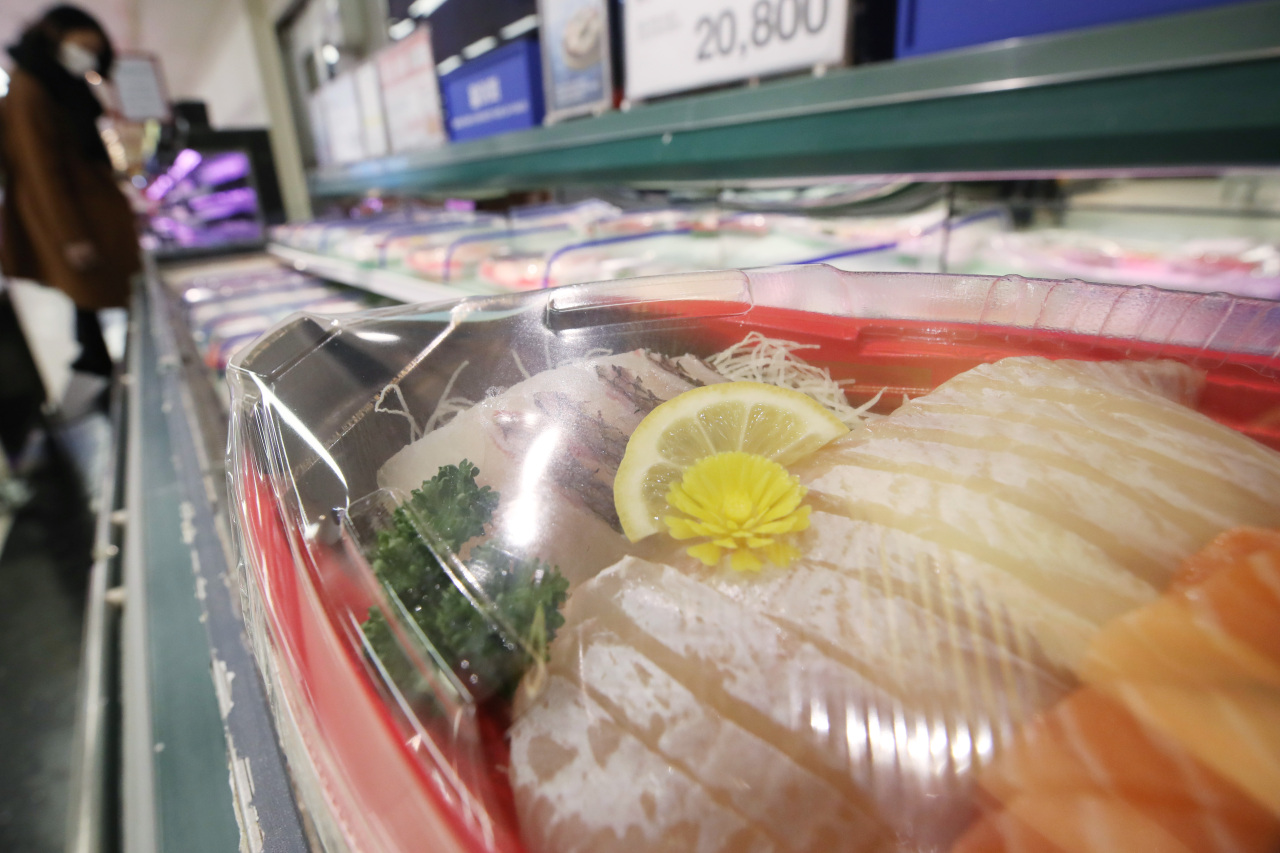
SEJONG -- The on-year growth of consumer prices has reached the highest level in 10 years in 2021, aggravating the burden on the debt-saddled household sector.
According to Statistics Korea, consumer prices climbed 2.5 percent this year compared to 2020. After reaching 2.2 percent in 2012, the growth ranged between 0.4 and 1.9 percent during the 2013-2020 period.
The 2021 figure marked the highest since it peaked at 4 percent in 2011, posting over 2 percent for the first time in nine years since 2012.
Amid the record-high outstanding household debt worth 1,840 trillion won ($1.54 trillion) as of September, the fast climb in consumer prices is bringing about worries over the possibility that the mounting inflationary pressure could hamper government-led efforts to revitalize private consumption.
“A large portion of households are ridden with mortgages or credit-based loans. As their capacity to spend has already been weakened, high consumer prices could be a main hurdle for economic normalization,” said a research analyst in Seoul.
Statistics Korea data showed that the high growth in 2021 was led by price surges in agricultural (8.3 percent growth on-year), livestock (12.7 percent) and petroleum (15.2 percent) products.
The climb in local petroleum products involving gasoline was unavoidable, given the spike in international crude prices during the second half of 2021.
Some analysts claimed that agricultural and livestock prices rose sharply, buoyed by the government’s payouts for households -- using taxpayer money -- for several times in the name of emergent support to overcome sagging consumption amid the pandemic.
By region, Sejong topped the list among the eight major cities as it posted a 2.7 percent growth in consumer prices. Incheon, Daegu and Gwangju were the next at 2.6 percent, followed by Busan, Daejeon and Ulsan at 2.5 percent.
The figure for Seoul -- a 2.1 percent growth -- stayed under the nationwide average of 2.5 percent. The capital also posted the lowest among the eight major cities and nine provinces nationwide.
Both South Chungcheong and Gangwon provinces recorded the highest in the nation with a 2.8 percent growth.
Throughout 2021, growth by month has become steeper in the fourth quarter -- 3.2 percent (compared to a year earlier) in October, 3.8 percent in November and 3.7 percent in December.
It stood under 3 percent from April to September, after staying under 2 percent from January to March.
According to Statistics Korea, consumer prices climbed 2.5 percent this year compared to 2020. After reaching 2.2 percent in 2012, the growth ranged between 0.4 and 1.9 percent during the 2013-2020 period.
The 2021 figure marked the highest since it peaked at 4 percent in 2011, posting over 2 percent for the first time in nine years since 2012.
Amid the record-high outstanding household debt worth 1,840 trillion won ($1.54 trillion) as of September, the fast climb in consumer prices is bringing about worries over the possibility that the mounting inflationary pressure could hamper government-led efforts to revitalize private consumption.
“A large portion of households are ridden with mortgages or credit-based loans. As their capacity to spend has already been weakened, high consumer prices could be a main hurdle for economic normalization,” said a research analyst in Seoul.
Statistics Korea data showed that the high growth in 2021 was led by price surges in agricultural (8.3 percent growth on-year), livestock (12.7 percent) and petroleum (15.2 percent) products.
The climb in local petroleum products involving gasoline was unavoidable, given the spike in international crude prices during the second half of 2021.
Some analysts claimed that agricultural and livestock prices rose sharply, buoyed by the government’s payouts for households -- using taxpayer money -- for several times in the name of emergent support to overcome sagging consumption amid the pandemic.
By region, Sejong topped the list among the eight major cities as it posted a 2.7 percent growth in consumer prices. Incheon, Daegu and Gwangju were the next at 2.6 percent, followed by Busan, Daejeon and Ulsan at 2.5 percent.
The figure for Seoul -- a 2.1 percent growth -- stayed under the nationwide average of 2.5 percent. The capital also posted the lowest among the eight major cities and nine provinces nationwide.
Both South Chungcheong and Gangwon provinces recorded the highest in the nation with a 2.8 percent growth.
Throughout 2021, growth by month has become steeper in the fourth quarter -- 3.2 percent (compared to a year earlier) in October, 3.8 percent in November and 3.7 percent in December.
It stood under 3 percent from April to September, after staying under 2 percent from January to March.


















![[Today’s K-pop] Treasure to publish magazine for debut anniversary](http://res.heraldm.com/phpwas/restmb_idxmake.php?idx=642&simg=/content/image/2024/07/26/20240726050551_0.jpg&u=)